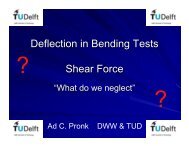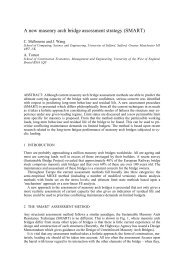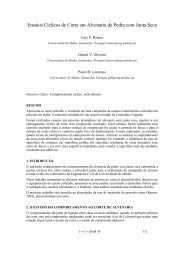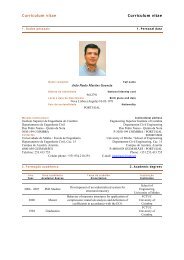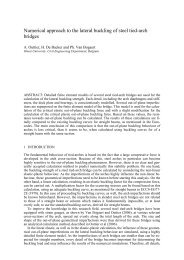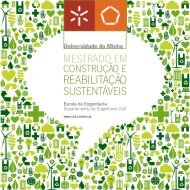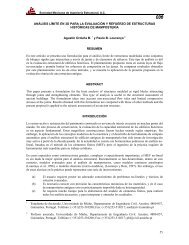Sustainable Construction A Life Cycle Approach in Engineering
Sustainable Construction A Life Cycle Approach in Engineering
Sustainable Construction A Life Cycle Approach in Engineering
Create successful ePaper yourself
Turn your PDF publications into a flip-book with our unique Google optimized e-Paper software.
Facades form the biggest part of the build<strong>in</strong>g‟s outer surface. Therefore enough area is ready<br />
on a façade for the use of PV components. If they are used on big and prestigous office build<strong>in</strong>gs<br />
(e.g. adm<strong>in</strong>istration build<strong>in</strong>gs of big companies) they already beg<strong>in</strong> to payback due to the<br />
fact that they would be used <strong>in</strong>stead of prestigious and expensive façade cladd<strong>in</strong>gs and <strong>in</strong> addition<br />
they produce electricity. A facade gives the first impression to the visitors. Architects try to<br />
tell their aspects and their clients‟ wishes on the facade with a suitable form and color. Therefore<br />
the design of the facade of a build<strong>in</strong>g has an important part <strong>in</strong> the design of the whole<br />
build<strong>in</strong>g. And it is an aesthetical element for the architect. Therefore PV module use on the<br />
build<strong>in</strong>g facade needs a special and careful design. At the same time, PV module use on the<br />
build<strong>in</strong>g facade is an easy way of show of technology use <strong>in</strong> the construction <strong>in</strong>dustry, by be<strong>in</strong>g<br />
seen from the street easier than its use on the roof. Therefore, PV modules can make build<strong>in</strong>gs<br />
more prestigious when used properly. PV modules on facades provide multiple functions. One<br />
is the aesthetic as told above. They also produce electricity. They may be used as transparent or<br />
semitransparent elements to provide light to the <strong>in</strong>terior. They provide solar control when used<br />
as a shad<strong>in</strong>g element. But first of all, they separate the <strong>in</strong>terior of the build<strong>in</strong>g from the outside.<br />
Therefore, the aim of this study is to exam<strong>in</strong>e the possibilities of photovoltaic component use<br />
on build<strong>in</strong>gs and its energy efficiency. This is go<strong>in</strong>g to be done by calculat<strong>in</strong>g the energy efficiency<br />
of BIPV modules by us<strong>in</strong>g both the orientation of the build<strong>in</strong>g and the tilt angle of the<br />
PV modules. Hence, the energy efficiency tables produced with<strong>in</strong> this study could be used for<br />
all of the build<strong>in</strong>g sk<strong>in</strong> elements, and especially for the design of the shad<strong>in</strong>g elements produced<br />
by PV modules. In the end, this study will put forward the possibilities of the PV component<br />
use on build<strong>in</strong>gs more efficiently and help produce energy-efficient build<strong>in</strong>gs.<br />
2 SHADING ANALYSIS<br />
When “PV - Sun - Radiation - Build<strong>in</strong>g” words are thought together, the form<strong>in</strong>g of build<strong>in</strong>gs<br />
with the help of passive design system pr<strong>in</strong>ciples accord<strong>in</strong>g to the sun is recognized. That is due<br />
to the fact that climatic comfort conditions could be achieved <strong>in</strong> the <strong>in</strong>terior by the use of the<br />
differences <strong>in</strong> the angles of the sun-rays. If PV elements are go<strong>in</strong>g to be used <strong>in</strong>stead of roof or<br />
wall cladd<strong>in</strong>g elements, they are go<strong>in</strong>g to take the solar radiation <strong>in</strong>stead of them, but <strong>in</strong> spite,<br />
they are go<strong>in</strong>g to use most of this solar radiation to produce electricity.<br />
The maximum efficiency <strong>in</strong> Build<strong>in</strong>g Integrated PV (BIPV) modules could be achieved while<br />
shad<strong>in</strong>g a build<strong>in</strong>g, because there is an unwanted solar radiation. This unwanted solar radiation<br />
will occur <strong>in</strong> every situation as long as the sun sh<strong>in</strong>es. And the build<strong>in</strong>g must be protected from<br />
this unwanted solar radiation as part of the passive system. Therefore if these shad<strong>in</strong>g devices<br />
are composed of PV elements, then electricity is go<strong>in</strong>g to be produced from this unwanted solar<br />
radiation which <strong>in</strong> turn decreases the electricity demand of the build<strong>in</strong>g. Therefore this use is<br />
one of the most efficient ways of electricity production by BIPV modules.<br />
In order to reach the optimum result <strong>in</strong> the use of BIPV modules, it is not go<strong>in</strong>g to be enough<br />
to set the PV elements with the suitable tilt angles. It is necessary to determ<strong>in</strong>e the best location<br />
<strong>in</strong> which the radiation is received maximum <strong>in</strong> the field. Otherwise, the best result could not be<br />
achieved. So, the build<strong>in</strong>g envelope is go<strong>in</strong>g to be formed accord<strong>in</strong>g to:<br />
1. the tilt angle which the PV panels require for the maximum energy output, and<br />
2. the orientation angle at which solar radiation is received as optimum for provid<strong>in</strong>g the<br />
comfort conditions.<br />
Because of this, how to design a shad<strong>in</strong>g element (<strong>in</strong> horizontal and <strong>in</strong> vertical) could be<br />
reached by the use of the “Shad<strong>in</strong>g Analysis” and determ<strong>in</strong><strong>in</strong>g the tilt angle could be done with<br />
the use of a simulation program.<br />
It could be said that the “sk<strong>in</strong>” of the build<strong>in</strong>g helps controll<strong>in</strong>g the comfort conditions <strong>in</strong> the<br />
build<strong>in</strong>g. This is important s<strong>in</strong>ce human be<strong>in</strong>gs are not as fortunate as animals aga<strong>in</strong>st the envi-<br />
122


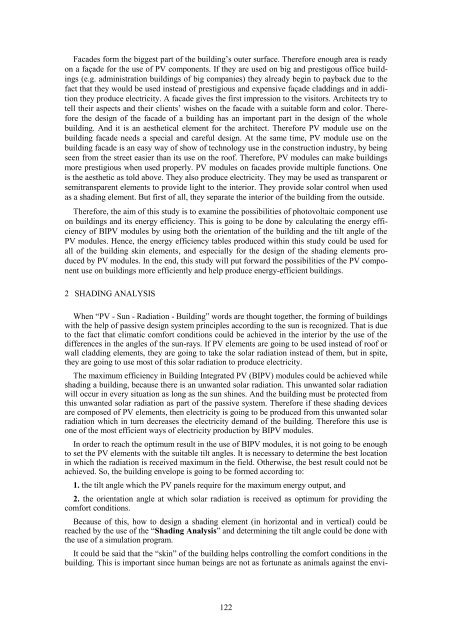
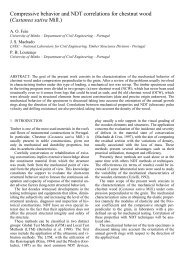
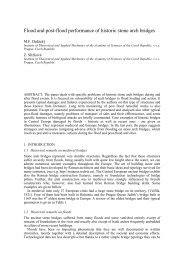
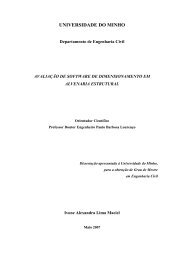
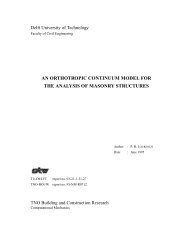

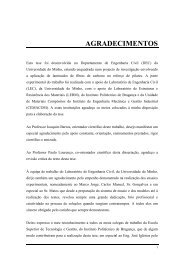

![Weibull [Compatibility Mode]](https://img.yumpu.com/48296360/1/190x134/weibull-compatibility-mode.jpg?quality=85)
